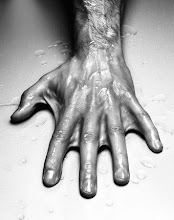 Today we had one of our busiest days in the labo so far but in the grand scheme of things it really wasn't that bad. We continued our work in choux pastry by attacking some more complicated patisseries and also finished off our allumettes and cream horns.
Today we had one of our busiest days in the labo so far but in the grand scheme of things it really wasn't that bad. We continued our work in choux pastry by attacking some more complicated patisseries and also finished off our allumettes and cream horns.I struggle to know the best word in English for the French 'pâtisserie' where it refers to an item of pâtisserie like and eclair, for example. A pastry would be the obvious choice but I really do not like that word as in English you can't really use it to apply to a mousse or anything which isn't heavily clad in pastry like a turnover. Dish is not quite right as that's more of a restaurant term and cake/pudding/dessert do not feel right either. Ideas on a postcard to Rouen.
That said, the two new items we attacked today were the Paris-Brest and the St. Honoré.
The Paris-Brest was named in honour of the Paris-Brest cycle race, the oldest cycle race in the world which is still competed. You have to get from Paris to Brest (on the Westernmost tip of Britanny) and back again within 90 hours. It's about 750 miles. A baker along the route allegedly decided to create a pastry (ugh) to celebrate the race and that is what is known as a Paris-Brest and is very popular in France (but, despite this, not that often seen). It's meant to look a little like a bicycle tyre. Unfortunately our teacher did not tell us about the history but I managed to find out in a book.
A small Paris-Brest is a choux ring about the size of a bagel covered with chopped nuts and filled with a special hazelnut cream. The large Paris-B is considerably trickier. It's a large choux ring the size of a decent halo formed by piping one choux ring inside the other with a third on top nestling in the crotch. Then there is a fourth ring piped separately called the couronne (crown) which is rather like the inner tube... in our version this couronne is filled with crème pâtissière (flavoured with kirsch), and this is inserted inside the fat ring which is filled with the hazelnut cream. Quite a fiddly operation.
In the photo above, the left rack has 6 small Paris-Brests at the top, the fat, outer ring on the left underneath and the inner tube on the right. The filling is done by cutting the various components in half horizontally. The finished cake is rather a beast but no photo of mine because my inner tube had too big a diameter and as a result the garnishing went awry. It should end up looking rather like this.
A good way to pipe the circles is to dip a tart ring in flour and bang it onto the baking sheet. It will leave a trace which you can be followed when piping.
We did not have time to assemble the St. Honoré so we froze the choux and will come back to them on Tuesday.

No comments:
Post a Comment